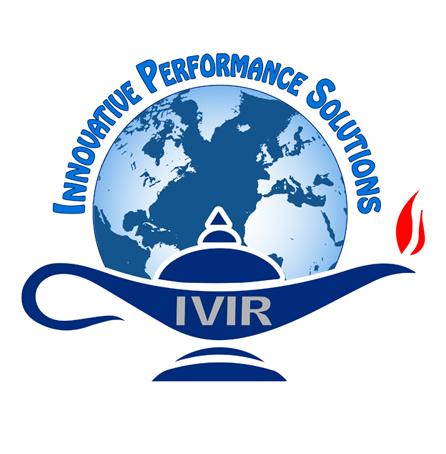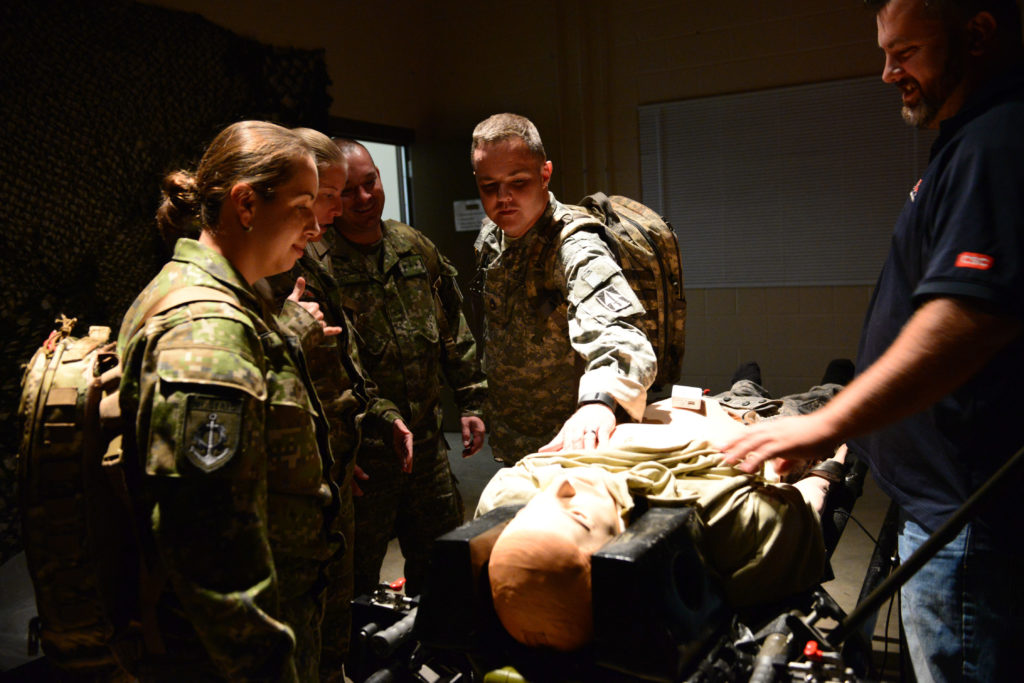IVIR Inc. began research on JETS in 2016, when it was awarded a contract from the U.S. Department of Defense (DoD) (W81XWH-16-2-0064) to conduct research on a “Joint Evacuation and Training System of System with the focus on Patient Handoffs and Transfers.” The study and design effort focused on developing an architectural design for a system of systems for joint en route care training specific to patient handoffs and transfers. The specific aims of this effort were as follows:
JETS Background
● Provide for a more realistic representation of casualty handoffs and transfers that occur in the joint en route continuum of care with improved mechanisms for training, test and evaluation to reduce medical errors and adverse events occurring before, during, and/or after patient handoffs and transfers.
● Add to the current body of knowledge by identifying and addressing gaps in joint en route care training, and construct a top-level interoperable architectural framework for a training system of systems that can track individual and team performance correlated to patient outcomes.
The objective was to provide live, virtual, constructive, and gaming (LVCG) simulations to assess and evaluate the patient handoffs and transfers in a controlled and standardized way to help address these areas. The architectural design for a comprehensive simulated system of procedures represented casualty handoffs and transfers occurring in the joint en route continuum of care, including improved mechanisms for training and test and evaluation.
In 2018, IVIR Inc. was awarded a follow-on contract from the DoD (W81XWH-15-9-0001) to develop a “Prototype of the Joint Evacuation and Transport Simulation System.” The intent was to design an architecture that integrates existing commercial simulations into one cohesive system of systems for joint en route care training. The architecture focused on communication between the providers, en route care, patient movement, patient handoffs, transfers, and logistics. The focus on open architecture and robust standards allowed for all subsystems, such as simulation devices, mission planning, rehearsal components, and inter-component qualification systems, to integrate with the architecture. This allows the systems and devices to integrate while avoiding the need to develop specific integration strategies between them. The architecture accounts for all necessary training and simulation data and is expandable to cover future training needs.
Also in 2018, IVIR Inc was awarded a separate contract from the DoD to research and develop a “Prolonged Field Care Training No Evacuation, Now What (PFCT: NENW) System (W81XWH-18-C0176). The DoD defines Prolonged Field Care (PFC) as, “Field medical care applied beyond doctrinal planning time-lines in order to decrease patient mortality and morbidity. Prolonged field care uses limited resources and is sustained until the patient arrives at the next appropriate level of care.” The current DoD standard is to evacuate a wounded or seriously injured soldier, from point of injury to higher echelon of care, within one hour. PFC assumes that a local tactical situation is preventing medical evacuation for up to 72 hours. Since military first responders are currently only trained to provide immediate care for severe trauma injuries for about an hour, PFC represents a major paradigm shift and significant training challenge. To help meet this need, the DoD challenged IVIR Inc. to create a prototype simulation system to support competency-based training for both individuals and teams with the following characteristics:
● compatible with existing and future Tactical Combat Casualty Care (TCCC) training systems;
● realistic in terms of feasibility for military use and implementation;
● adaptive to the needs of individual learners and teams based on performance;
● as a long-term goal, include the Physician, Physician Assistant, Nursing scenarios;
● team performance training and different diseases/pathologies, as applicable, along with updated instruments and tools that are supplied with the military healthcare;
● support such as additional communication, logistical, and security training in addition to the medical components as part of a modular design;
● provide for learner tracking and assessment and should be able to be used in austere environments interoperable with any and all training systems, learning management systems, assessment systems, and tracking systems.
The requirements for the JETS and PFC projects pushed IVIR Inc. to consider a modular approach that allows commercial human patient simulators, part-task trainers, Learning Management Systems, physiology engines, and standardized patients to be digitally connected to create bespoke training exercises. Because PFC focuses on military first responders providing care for up to 72 hours, this required the creation of a microsystem, combining the components discussed above into a single, bespoke patient for individual or collective training. JETS requires the ability to take these microsystems and spread them throughout the Roles of Care (higher echelons with increased medical care capabilities) by creating a macro system, that replicates the transfer, and evacuation, of a patient.
While the goals of the original JETS and PFC projects were different, it became obvious that they represented different aspects of the same continuum of care, so it made sense to merge the technologies into a single, technology ecosystem. Thus, the Joint Emergency Trauma Simulation system was born.
The core functionality of JETS now is that it allows current, commercial off-the-shelf, medical simulations, and simulation support systems, to communicate with each other, in a federated network, over a standard Internet or intranet connection. This allows multiple simulation components to be combined to create a training microsystem representing a single, customized simulated patient. It also allows simulated patients to be digitally transferred to other patient simulators as an analog of the transfer of real-world patients through the various Roles of Care.
How does JETS work?
The JETS system developed by IVIR Inc. and its collaborators uses the High-Level Architecture (HLA) standard, and an open-source runtime infrastructure (RTI), that each simulation system connects to. Each simulation system joining the JETS network requires software that enables it to communicate data within this RTI. The design is such that the JETS architecture does not require access to the proprietary computational engines of a commercial simulation or simulation component. This allows simulations to communicate, and simulated patients to be digitally transferred to other patient simulators, as an analog of the transfer of real-world patients through the various MHS Roles of Care. JETS also allows multiple simulation systems to be integrated to provide enhanced training capabilities not normally available in a single system. The JETS network can also be compatible with other network protocols via a network gateway or similar solution. This allows a JETS network to interact with other types of medical simulation systems using a different network protocol, such as the Advanced Modular Manikin, as well as current, and future, military tactical and strategic simulations such as the Army’s future Synthetic Training Environment (STE) which is currently under development.
Current and Future Applications
In both civilian and military contexts, medical simulation has mostly focused on the individual learner, particularly when it comes to replicating the sensory outputs needed for the acquisition of psychomotor and cognitive skills. This is partly because medical training has tended to focus on the individual learner, and partly because there are practical considerations in creating clinical simulations.
There is an axiom in the medical simulation industry that “cost = fidelity.” The more realistic the sensory outputs are from the clinical simulation, the more expensive it is to create it. This drives the medical simulation industry to create various types of medical simulations that focus on a specific set of requirements. For example, a full-body, computer-based, clinical manikin can replicate a set range of trauma conditions, suitable for training first responders on performing certain aspects of first response procedures, but no current, clinical manikin can replicate all possible injuries, diseases, and treatments. JETS addresses this issue by allowing trainers to combine other simulations to create a bespoke patient that meets their specific training requirements. JETS also provides a technical standard that allows clinical simulations to interact with instructional support components such as learning management systems and after-action review systems. So, just as an office manager can create a custom office network, with computers and printers from different companies, an instructor can use JETS to create instructional systems to meet clinical training needs.
In a military context, JETS is a logical extension of the DoD’s ongoing efforts to maximize the use of computer-based simulation for individual and team training. The DoD has learned that, when properly used, simulation can allow combat units to cost-effectively train as they will fight, even when those units are physically separated from each other at the home station. Simulation does not replace the need for combat units to physically train together, but it does make those very costly, physical training events much more effective. JETS can now bring those same benefits to medical teams that support combat units, and even allow the medical teams to integrate with the combat simulations. This ability to train teams is also relevant in a civilian context because of the general acknowledgment that most medical care occurs in a team setting.
In summary, JETS is an enabling technology that allows instructors to create custom simulated patients and custom clinical instructional systems, that will support both individual and team training, regardless of the physical location of instructors or learners. It will do so by using existing, commercial simulations, that are network-capable, and have the JETS connection software. But, the most exciting thing is not the JETS technology, but rather watching how instructors will use this technology to improve clinical performance.
For Additional Information
Contact Bill Lewandowski at blewandowski@ivirinc.com
Disclaimers and Acknowledgments
This effort is sponsored by the U.S. Government under Other Transactions Number W81XWH-15-9-0001. The U.S. Government is authorized to reproduce and distribute reprints for Governmental purposes notwithstanding any copyright notation shortly after that. The views and conclusions contained herein are those of the authors and should not be interpreted as necessarily representing the official policies or endorsements, either expressed or implied, of the U.S. Government.




